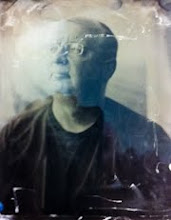Title: "The Cadence of Silence"
(click image to view larger)
In his book "The Sounds of Poetry", Robert Pinsky writes: "Every speaker, intuitively and accurately, courses gracefully through immensely subtle manipulations of sound...It is almost as if we sing to one another all day. We do not need to be taught such things: if they were taught in school, we would find them hard and make a mess of them....we have learned with the sound patterns organically, for practical goals, from before we can remember, without reflection or instruction or conscious analysis, we all produce the sounds, and understand them, with great efficiency and subtle nuance."
Pinsky points out that this ability we acquired inherently as we grew up allows us to appreciate the sound of a line of poetry even if we have little idea of its meaning. Everything he's written about sound is equally applicable to our acquired drive to make art in an unself conscious way as children - of course, until we meet that teacher in grade school, the one who introduces us to rules and conventions. I think the same effect occurs with our appreciation of the sound of poetry - ruined by the emphasis in schools on rules and conventions of poem construction.
The thrust of Pinsky's book is outlined in this passage: "And yet, having learned these graceful, peculiar codes from the cradle – the vocal codes that poets have used to make works of art – we can gain a lot by studying the nature of what we learned long ago without study: learning to hear language in a more conscious way can enhance our pleasure in lines and poems." Again I see a parallel with visual art: the untutored artist or viewer misses out on a world of pleasure and understanding by proceeding solely on the premise of "I like what I like" when making or viewing art. Making a more conscious effort to really look at an image, to ask oneself what works and/or doesn't work in making the viewing experience compelling, is a way to sharpen one's eye, to increase one's awareness of the ways in which art succeeds in communicating ideas and to strengthen one's own art practice.


No comments:
Post a Comment